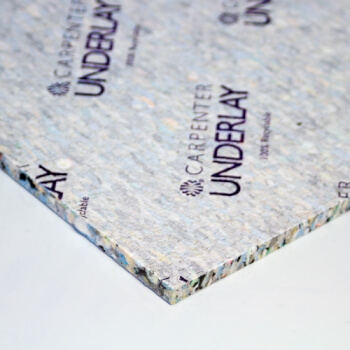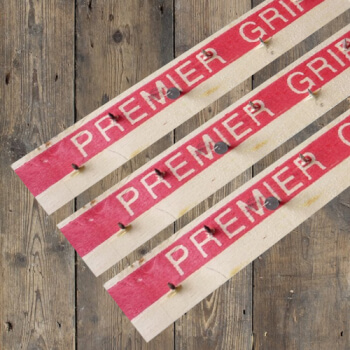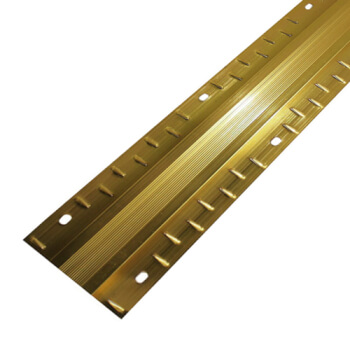An Introduction To Artificial Grass
By Jim (24/11/2017)
Hello all!
Artificial Grass is a product we have only recently started stocking, and it has already garnered some interest, so we thought you might appreciate an introduction to this mysterious material and its properties...
The First Seeds
Artificial Grass was not originally designed for domestic use or even public spaces - it was made for indoor stadiums and other sports grounds where real grass couldn’t flourish (due to lack of light) or required extra maintenance.
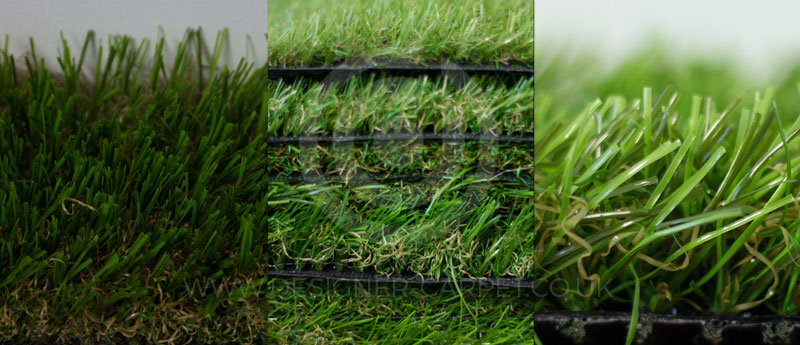
Artificial Grass - Image © Designer Carpet Remnants
Research for ‘artificial sports surfaces’ had been going on since the mid 1950s, primarily by the Ford Foundation - their humanitarian goals led them to focus on its use in schools, particularly in urban areas, to see if providing better sports facilities could help improve children’s health. However, the idea only came to fruition (and commercial viability) when it began to be installed in baseball stadiums in the mid 1960s.
Putting Down Roots
It was in 1965 that Chemstrand, a subsidiary of Monsanto - now more well-known for its agribusiness - created the standard for artificial grass.
First released under the slightly less appealing soubriquet of ‘ChemGrass’ - a name that would never get passed marketers now - ‘AstroTurf’ was installed in the 9-acre, 42,000 seater Houston Astrodome the following year. Its new name, taken from the stadium by savvy marketing man John Wortmann (so the story goes) was trademarked in 1967, and soon became synonymous with all artificial grass.
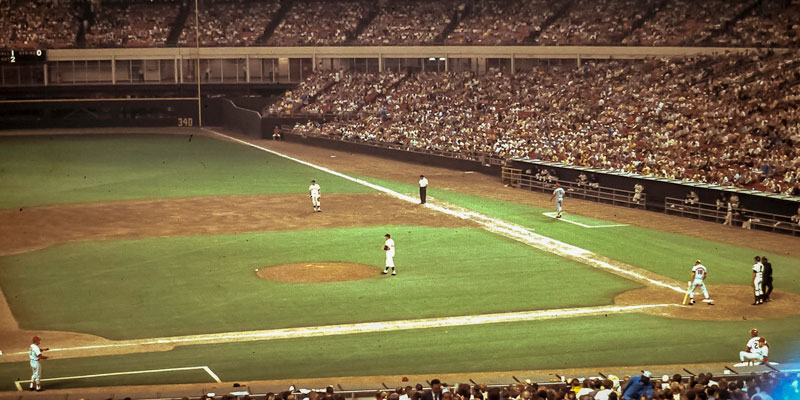
Houston Astrodome, 1969 - Image By Bill Wilson, Found On Flickr
Fun fact - when a brand name gains prominence in this way (e.g. Hoover, Thermos, Sellotape) it is referred to as being ‘genericised’.
Also, although it is still a trademarked name, Monsanto no longer own it - it was passed on in the 90s and now belongs to the American Sports Products Group Inc - another name which was clearly not designed by marketers!
Growing...
On the heels of the Houston Astros, in 1967 AstroTurf was installed in Indiana State University’s outdoor Memorial Stadium and in 1969 the Chicago White Sox had it put down in there then-playing ground of Comiskey Park.
Through the 1970s it grew so ubiquitous in American baseball that it actually changed the style of play - the ball behaved differently on the artificial surfaces, so players had to compensate. The NFL also followed suite, as did many UK football clubs in the 1980s.
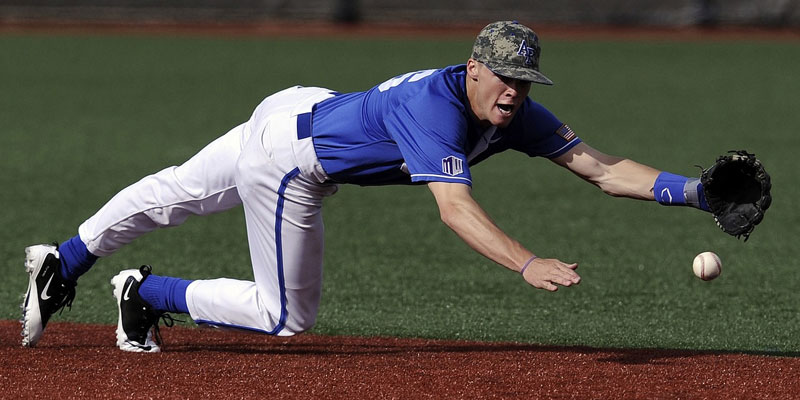
An Infeilder
Players noticed that the ball would bounce higher on artificial grass than on real grass!
Image Found On MaxPixel
...And Mowing
However, artificial grass wasn’t without its critics.
The fact that in the early days it was almost always laid directly on concrete (rather than the modern installations, designed for more ‘give’) often meant extra strain placed on players’ joints. It was not uncommon for early versions of artificial grass (particularly those which sprung up in the wake of AstroTurf and were more cheaply made) to get very hot and even melt under the Sun and stadium lighting!
Grazes or ‘rug-burns’ were common for these trial products - all these factors led to many stadiums returning to real grass (including the aforementioned Comiskey Park, in 1976) , and in the 1990s the new, softer product ‘FieldTurf’ (made by French company Tarkett Inc) temporarily replaced AstroTurf as the standard for sports grounds.
Despite these issues it is still very popular, with around 1,200 new installations every year - in fact, it’s popular enough that there is actually a ‘Synthetic Turf Council’ (dedicated to ‘improving the world through synthetic turf’), who provided this very statistic!
How Is It Made?
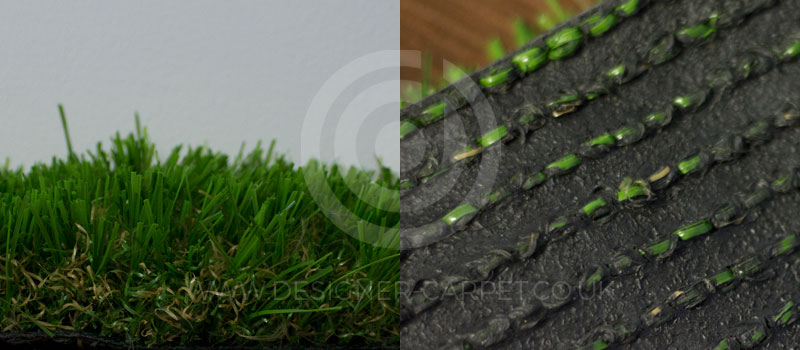
Artificial Grass And Backing - Image © Designer Carpet Remnants
In many ways artificial grass is the Bizarro-world cousin of carpet. It is made using the same ‘tufting process’ (first patented in Dalton, Georgia, according to the Carpet and Rug Institute) as many carpets and is also given a secondary backing applied with adhesive. However, unlike carpet, natural fibres are eschewed in favour of pure synthetics.
The composition does vary - many use a combination of polyethylene and polypropylene, and other manufacturers prefer nylon for its springiness, something which carpet also benefits from.
These plastic polymers are extruded into long strands and put onto spools, much like wool yarn, and then shaped in various ways to make them appear ‘grass like’.
It is also common for it to be treated to protect them against ultra-violet light to counter the overheating issues faced in the past.
Like carpet, it is very important what goes under the product as well, however the installation process can be far more complex, even in domestic settings. The ground should be levelled for landscaping, and it is common for there to be layers of gravel put down. In some cases various ‘infills’ such as sand, cork or crumb rubber are added between the fibres to support them.
Where Is It Used?
Although most artificial grass installations are still for sports, since the 1990s it has become very popular for other areas too. Both domestic and commercial properties (such as hotels and offices) have benefitted from installing artificial turf. Manufacturers make mention of its cleanliness, low maintenance and water-saving advantages, as well as its looks - artificial grass is always gives that ‘freshly mown’ appearance!
There is also a current trend for ‘Pop-Up Parks’ in conference venues, weddings and even city centres, such as this one which appear in Leeds this Summer…
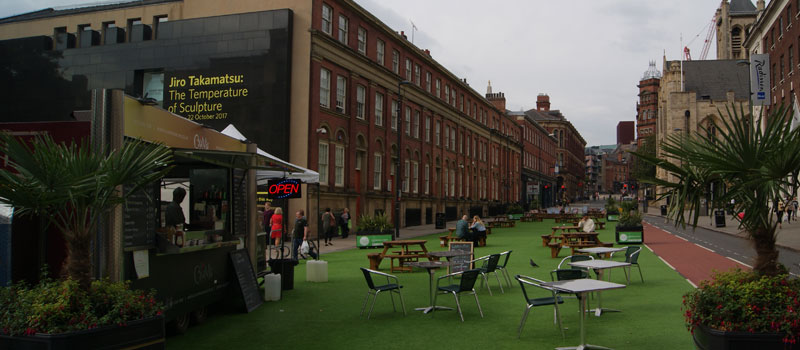
Leeds Pop Up Park - Image Found On WikiPedia
Despite being similar in appearance, ‘landscaping’ grass does tend to have different properties to its sports-purpose cousins, so do make sure you are buying the right kind. And the display grass so often used by butchers, greengrocers and other market stall holders is - dare we say it? - quite cheaply made and unsuitable for lawns, where children and animals might be playing.
Our stock is all high quality, but purely for domestic and commercial use, rather than sports and games.
So, you can now impress your friends with your deep knowledge of artificial grass! Well, perhaps not, but at least you know more about what you are buying. Also worth considering, we have extended our very popular rug-making service to artificial grass products, so you can get yourself something which will look great inside and outside, perfect for pets and children!
Further Reading and References...
Enter your required size for our most accurate pricing and availability.








